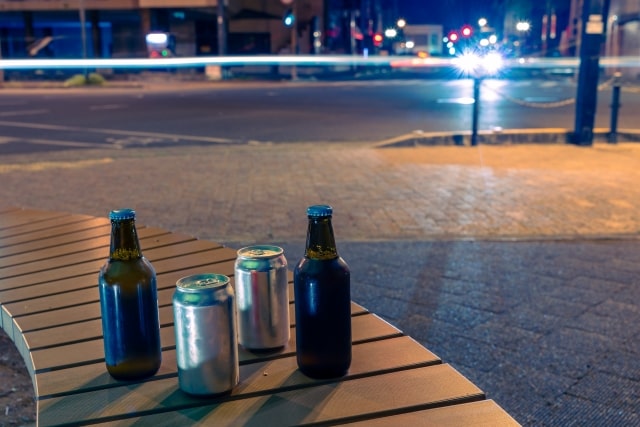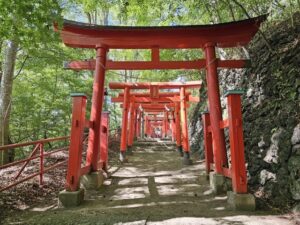In recent years, street drinking in Shibuya has become a growing issue. With the increasing number of foreign tourists, problems such as littering and noise caused by public drinking have worsened. In response, Shibuya Ward implemented an ordinance in October 2024 that bans street drinking. This measure aims to protect the quality of life for local residents while encouraging tourists to enjoy Shibuya responsibly. This article provides an in-depth look into the background, details of the ordinance, and its impact on foreign tourists.
Public Drinking Laws in Japan
In Japan, there are no national laws directly prohibiting drinking in public spaces, which means activities like enjoying alcohol in parks or streets are not illegal. This relaxed approach is quite unique compared to many countries where public drinking is strictly regulated. Japan’s cultural traditions, such as cherry blossom viewing and summer festivals, contribute to this leniency.
However, there are laws targeting disruptive behaviors related to drinking. For instance, public nuisances caused by intoxication are punishable under the Minor Offenses Act, and drunk driving is strictly prohibited under the Road Traffic Act. These laws focus on preventing harm rather than restricting drinking itself.
Additionally, some municipalities have introduced their own regulations to limit public drinking. For example, Kyoto has imposed restrictions in tourist areas to maintain aesthetics. Similarly, Shibuya has taken steps to address its own challenges through a new ordinance.
While Japan’s public drinking culture may appeal to foreign visitors, understanding and adhering to local rules is crucial, especially in tourist areas. This article focuses on Shibuya’s approach to managing public drinking through its newly implemented ordinance.
About Shibuya’s Ordinance
In October 2024, Shibuya Ward enacted an ordinance banning drinking in public spaces. The regulation applies to designated areas, including Shibuya Station and surrounding entertainment districts, from 6 p.m. to 5 a.m. While there are no penalties for violations, authorities issue warnings to encourage compliance. The ordinance aims to improve residents’ quality of life and enhance Shibuya’s appeal as a tourist destination.
This decision was driven by a rise in street drinking, particularly among foreign tourists. Issues such as nighttime noise, littering, and disturbances have escalated, leading to complaints from residents. Additionally, incidents related to public drinking, including altercations and underage drinking, have highlighted the need for stricter controls.
To support the ordinance, Shibuya Ward has launched awareness campaigns targeting both residents and tourists. Multilingual signs and social media posts explain the rules, while recommendations for bars and restaurants where drinking is allowed offer alternatives. The ordinance represents Shibuya’s effort to balance tourism and community well-being.
Background of the Ordinance
The ordinance addresses growing challenges tied to Shibuya’s transformation as a popular tourist hub. The surge in foreign visitors has led to a significant increase in nighttime street drinking, causing problems like littering, noise pollution, and safety concerns. Residents frequently report issues such as “feeling unsafe at night” and “waking up to piles of trash.”
Additionally, incidents involving drunk individuals have become more common, including fights, disturbances, and violations like underage drinking. Street drinking peaks during events like Halloween in Shibuya, drawing national attention to the area’s public safety challenges.
Shibuya Ward emphasized the need for the ordinance to protect residents’ quality of life and uphold its reputation as a top tourist destination. Through multilingual communication efforts, the ward informs foreign tourists about the rules and encourages responsible behavior. The goal is to create a harmonious environment where both residents and visitors can enjoy Shibuya.
Impact on Foreign Tourists
Shibuya’s street drinking ban has notable implications for foreign tourists. Many visitors, drawn to the unique freedom of drinking in Japan’s public spaces, may find the new rules surprising. This regulation alters the perception that public drinking is universally accepted in Japan.
To address this, Shibuya Ward has enhanced its outreach to foreign tourists. Multilingual signs explain the ordinance, while guides highlight alternative venues like bars and restaurants where drinking is permitted. These efforts aim to ensure tourists can enjoy their visit while respecting local rules.
The ordinance is expected to reduce issues like littering and noise, fostering a more comfortable environment for everyone. Over time, Shibuya may gain recognition as a destination where responsible tourism thrives. However, tourists seeking unrestricted public drinking experiences might feel inconvenienced, underscoring the importance of effective communication about the ordinance’s benefits and purpose.
By promoting mutual understanding, Shibuya aims to build a positive relationship between tourists and residents, ensuring a welcoming and enjoyable atmosphere for all.
Conclusion
Shibuya’s street drinking ban is a vital initiative to protect residents’ quality of life and enhance the area’s appeal as a tourist destination. The ordinance addresses problems like littering, noise, and public safety concerns, with an emphasis on balancing tourism and community interests.
While the ban may limit some tourists’ experiences, it provides an opportunity to discover Shibuya’s attractions responsibly. Adhering to the rules will help create a cleaner and safer environment for everyone. By continuing to monitor and adapt the ordinance’s implementation, Shibuya can serve as a model for sustainable urban tourism.









Comments